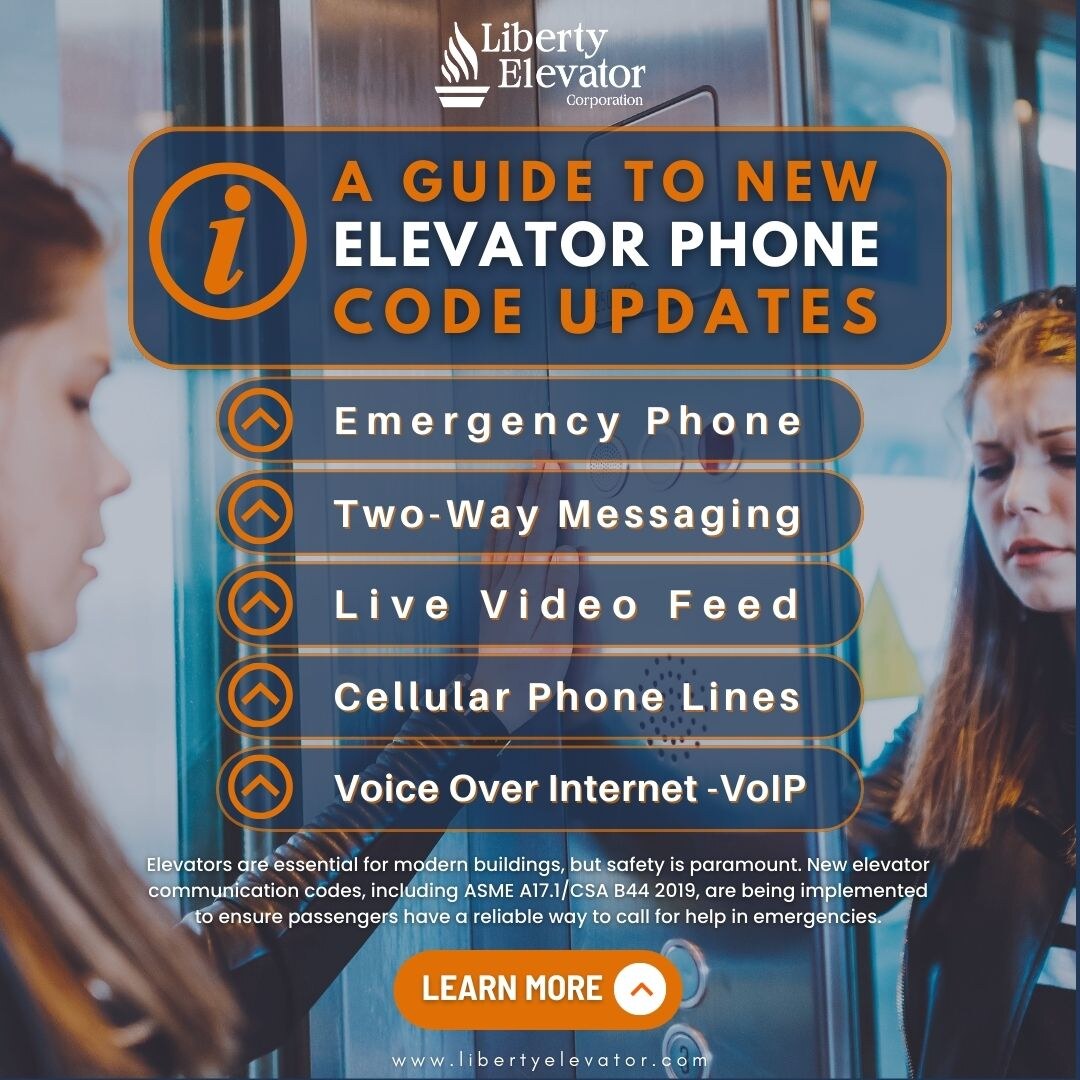Upgraded Elevator Communication Systems with Video and Two-Way Messaging
Elevators are essential for modern buildings, but safety is paramount. New elevator communication codes, including ASME A17.1/CSA B44 2019, are being implemented to ensure passengers have a reliable way to call for help in emergencies. This blog post explains these code updates and their impact on elevator phone systems.

Enhanced Safety with Two-Way Communication and Video
The new codes emphasize clear communication between passengers and emergency personnel, especially for those who are deaf, hard of hearing, or speech-impaired. This is achieved via the following:
- Two-way messaging: This caters to passengers with hearing or speech impairments. Text messages displayed on an in-car screen allow for "yes" or "no" responses using elevator buttons, ensuring everyone can communicate effectively.
- Video capability: Emergency responders can now see inside the elevator through a secure video feed. This helps assess the situation better, identifying if someone requires assistance or if it's a false alarm.
Special information about New York: New York State follows 2020 Building Code of New York State, and New York City specifically follows NYC Building Code 2022, both of which include additional video and two-way messaging requirements for elevator communications.
(NY) 3001.2 Emergency elevator communication systems for the deaf, hard of hearing and speech impaired.
An emergency two-way communication system shall be provided. The system shall provide visible text and audible modes that:1. When operating in each mode, includes a live interactive system that allows back and forth conversation between the elevator occupants and the emergency personnel.
2. Is operational when the elevator is operational.
3. Allows elevator occupants to select the text-based or audible mode depending on their communication needs to interact with emergency personnel.
Improved Emergency Response
- Clarifying communication methods: The code specifies how emergency personnel should communicate with passengers trapped in the elevator. Video helps responders confirm if a passenger needs help, even if they can't respond verbally.
- Reducing false alarms: Video allows responders to confirm if help is truly needed, minimizing unnecessary dispatches.
- Faster assistance: Clear communication helps responders understand the situation and deploy aid more efficiently.
The Demise of Landlines: Exploring Alternative Solutions
The Federal Communications Commission's Order 10-72a1 allows telecom companies to phase out traditional analog phone lines. Traditional copper phone lines are no longer supported, prompting the need for alternative solutions for elevator emergency phones. Here are some viable options:
- Cellular phone lines: Cellular networks offer reliable connections even during power outages, ensuring uninterrupted communication.
- Voice over Internet Protocol (VoIP): This cost-effective solution utilizes the building's internet infrastructure for voice calls. However, a robust and reliable internet connection is crucial.
- POTS line replacement devices: These bridge traditional lines with newer digital or wireless networks, offering a smoother transition.
Local Regulations: Consulting the Experts is Key
While these alternatives exist, local regulations can dictate specific requirements. Consulting with local authorities or professionals familiar with elevator codes is crucial before implementing any changes to your elevator communication system.
ASME A17.1 Code: A General Overview
Here's a breakdown of key elevator communication system requirements outlined in the ASME A17.1 code:
- 24/7 Availability: The system must connect with a designated party at any time.
- Hands-free Operation: The communication device should be usable without hands.
- Backup Power: The system must operate during power outages.
- Audible and Visual Signals: Activation should trigger an audible and visual indicator for passengers.
- Testing and Maintenance: Regular system checks are mandatory.
The Importance of Reliable Emergency Communication
The core principle of elevator communication – ensuring passenger safety in emergencies – remains unchanged. These code updates utilize technology to refine communication methods, ensuring everyone has a voice in an emergency. Regardless of the chosen technology, a reliable system is vital for keeping passengers safe and connected during unforeseen circumstances.
Key Takeaways
- New elevator communication codes prioritize clear communication for all passengers.
- Two-way messaging and video capabilities enhance emergency response.
- Landline replacement with cellular or VoIP networks is likely necessary.
- Local regulations and backup power requirements must be considered.
Whether utilizing traditional phone lines, cellular connections, or VoIP, a reliable communication system is vital. Staying updated with code revisions and exploring new solutions, while adhering to local regulations, guarantees passenger safety and a swift response during emergencies.
Liberty Elevator is Your Communication Champion
Liberty Elevator Corporation is committed to improving your property's safety and emergency communication. Weather you need a complete elevator modernization, cab refurbishment or regular maintenance, Liberty will deliver results that positively impact your property’s' guest expereince.
Contact Liberty Elevator for an evaluation of your property and an honest assessment of your elevator options across New York, New Jersey, Philadelphia & South Florida.
NYC Elevator Code - Door Lock Monitoring LINK
NYC Elevator Code - Emergency Brakes LINK

